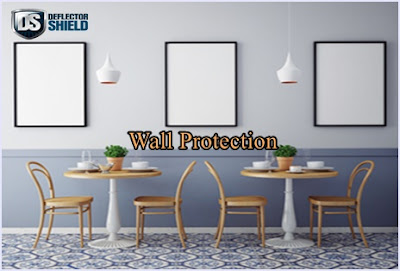Install a door stop and floor protection sheet
Are you tired of hearing the doors slamming against the walls? You must know about our Transparent wall protection and installing a door stop should not take you more than an hour of DIY. To know how to proceed, it's here!
Necessary material :
• a door stop;
• a ruler;
• an ordinary drill and impact drill;
an iron peg;
• a double-threaded screw.
• Choose a door stop
• You have the choice between Transparent wall and floor protection sheet:
• a door stop to be fixed to the ground;
• a door stop to be fixed to the wall or against skirting boards.
If you have underfloor heating, a door stop to be fixed to the floor is to be avoided. Similarly, for the tiles, it is better not to pierce your floor. Opt instead for a door stop to fix on a wall or a plinth. Small plus significant, these stops will not bother you when cleaning your floor.
If you choose a door stop to fix on the wall or against a plinth, consider taking one of a depth greater than that of your door handle (because in reality, it is the latter that collides with the wall and not the door).
From the aesthetic point of view, many models of door stops exist, from the most fantastic to the most classic. It will not be difficult to find your happiness in any DIY store.
If you do not want to fix anything on the wall or in the floor, be aware that there are also door stops to be placed on the floor without drilling. There is no need to make holes or screw. Only this stop moves easily.
Note: There are magnetic door stops. These are fixed in the wall at the handle and magnetically block the door.
• The pose
• For a Door stop /doorstop to be fixed to the ground
• Begin by measuring the depth of the handle.
Add a few cm to the measurement obtained to know how far from the wall position the stop. Indicate with a pencil the future location of the stop.
It is useless to have more than 10 cm distance between the wall and the stop. Your door must continue to open fully.
To fix the door stop on the floor you will need an iron dowel.
Arm yourself with an ordinary drill or impact drill (for use on hard materials) depending on the surface you will need to drill.
You may need both tools if your iron peg is larger than the depth of your flooring. For example, if your room is parquet, you must first enter the wood with your ordinary drill and drill the concrete with the hammer drill.
• Once your floor is drilled, insert the peg into the hole.
• Attach the door stop to the dowel using a threaded screw. Turn clockwise.
• For a door stop to be fixed to a wall or a plinth
• An iron peg will be required to secure the door stop to the wall or plinth.
• Equipped with a percussion drill, drill at the future location of the door stop.
• Then place the iron peg inside the hole.
• It only remains to fix the door stop on the ankle.
• To do this, use a threaded screw and turn clockwise.
• Transparent surface protection is for effective protection of the walls!
• Ideal for public buildings, hospitals, waiting rooms, workshops and offices.
• Protects walls against strong impacts caused by trucks, etc.
It does not require special care. Resistance to most detergents. Just visit Deflector shield and start taking advantage of the services.




Comments
Post a Comment